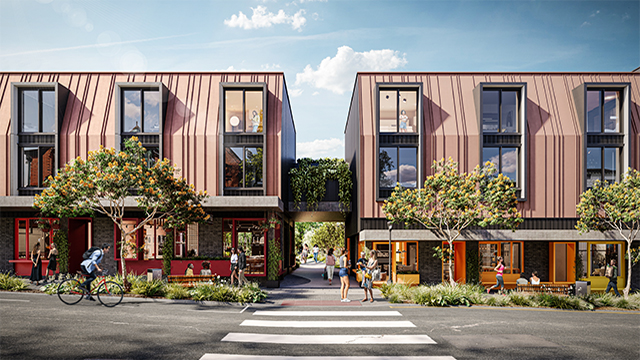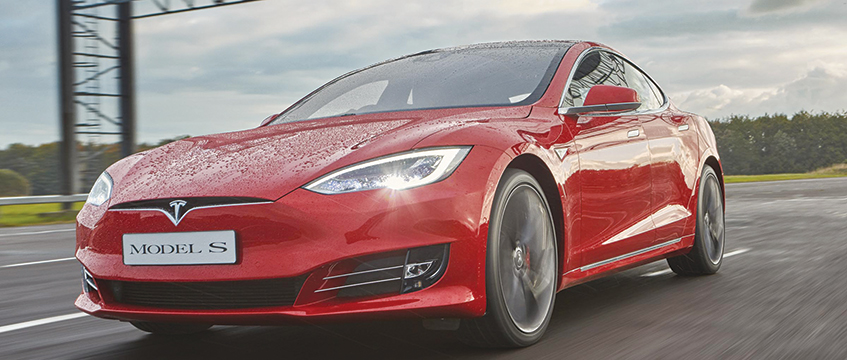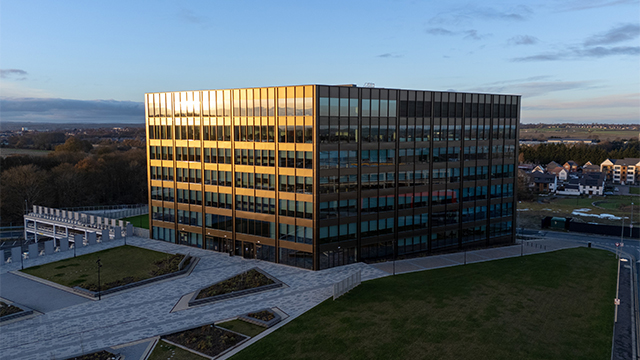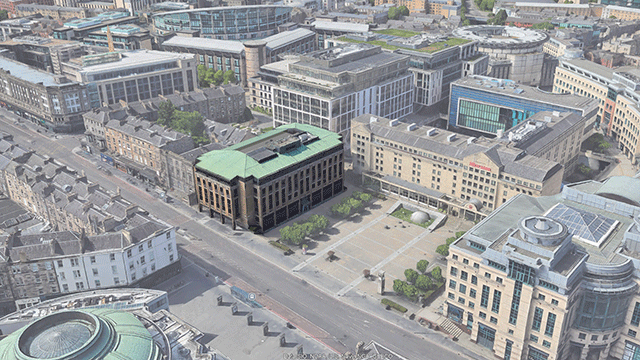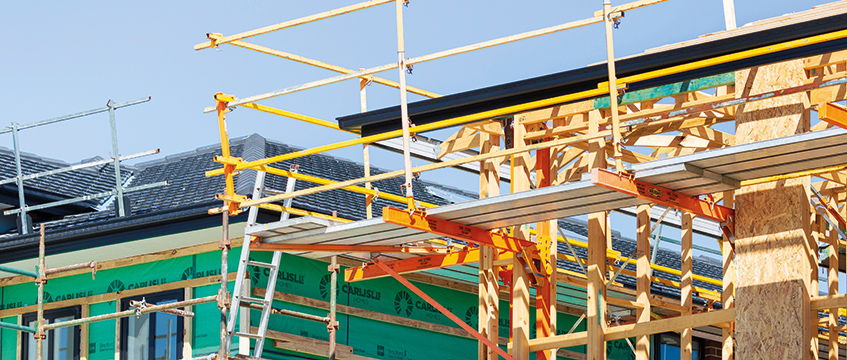With the government signalling the end of petrol and diesel cars in the UK, Tesla is poised to become one of the key drivers of a zero‑carbon future. Here director Georg Ell explains how landlords can plug in to the opportunities
If you are going to put your money on an occupier giant of the future, Tesla wouldn’t be a bad bet. When it was announced last month that the UK will follow a similar pledge to France and Norway and ban all petrol and diesel cars by 2040, Elon Musk’s $50bn (£39bn) company might well have shot to the top of the hit list of every agent, landlord and investor across the world.
From the increase in physical spaces required to store and sell its electric vehicles as they become more prevalent, to the tie-ups Tesla is already forging with landlords to expand its global charging network, the group’s director of Western Europe George Ell says there are plenty of opportunities for the real estate sector to get in on the action. Not least given the fact Tesla is looking to expand the group’s property portfolio by 30% across the globe over the next 12-18 months.
To facilitate these growth plans – which are likely to be just a starting point for future expansion as the electric car market grows year-on-year – Ell is on the lookout for flexible landlords with the right locations for new stores, delivery hubs and charging points across the Continent.
But for savvy landlords the question will not only be what they can do for Tesla, but what Tesla can do for them. The electric car market may be growing – in the UK alone new registrations of plug-in cars grew from 3,500 in 2013 to more than 107,000 by the end of July this year, according to the Society of Motor Manufacturers and Traders – but with the likes of Mitsubishi’s Outlander PHEV and the Nissan Leaf proving the most popular electric vehicles in the UK over the past two years, Telsa is not the only horse to back.
Here Ell insists that with an expansion strategy that blows the competition out of the water and the introduction of the company’s cheapest vehicle yet – the Model 3 is a snip at $35,000 (£27,000) – Musk’s plug-in posterchild is still leading the charge.
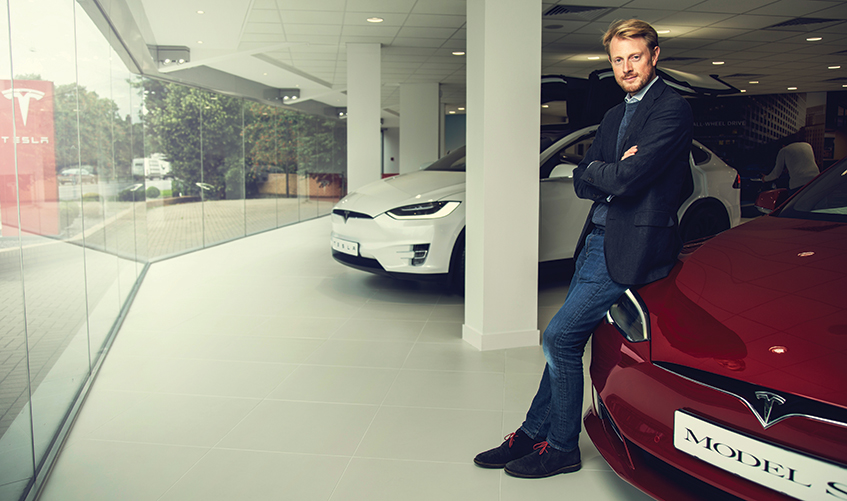
A growing market
In 2005, two years after Tesla was founded, the number of electric vehicles in the world was still in the hundreds. The number passed the 1 million mark in 2015 and after a 60% sales leap in 2016, there are now 2 million on the road across the globe, according to the International Energy Agency. And while just 500 electric cars were registered per month in the first half of 2014 in the UK, that figure has risen to 3,400 a month over the last year.
With such fast growth underpinning the market, the time to bolster the facilities and infrastructure required for a diesel- and petrol-free world is now. And Tesla is not wasting any time. In Q2 this year the company opened 29 new stores and service locations, bringing its global total to 300; it is looking to double the number of connection points for charging worldwide by the end of this year; and it is launching a number of new distribution hubs – with a particular focus on Europe.
The group bought German firm Grohmann Engineering – now renamed Tesla Grohmann Automation – at the end of last year and is planning to build a European battery production plant to supplement its 5.5m sq ft, $5bn Nevada-based Gigafactory. Set to be referred to as Gigafactory 3, 4 or 5 – the SolarCity Gigafactory in Buffalo, New York, is known as Gigafactory 2 – it will be the first step towards a large-scale European distribution network. Tesla has said it plans to eventually introduce three vehicle and battery factory locations in Europe as the company aims to produce 500,000 electric vehicles a year by 2018.
It is this strategy that could increase the multi-billion-dollar giant’s edge over its competition. Not many of Tesla’s rivals have the resources or firepower behind them to roll out such an extensive supporting infrastructure. And while alternative electric car models, including the Nissan Leaf and the Mercedes Benz C 350e, might still be more popular (and cheaper) choices in the UK, Tesla has a 30% market share in America, where it is the biggest player, having sold nearly 50,000 vehicles last year – a third of all plug-in vehicles in the US. And it shows no signs of slowing down. It delivered 25,418 cars worldwide in the first quarter of 2017.
With 400,000 pre-orders for the Model 3, the real estate side of the equation needs to respond fast. And this, says Ell, is where landlords can ride the Tesla tidal wave.
WATCH: EG looks at why landlords will have to pay attention to Tesla’s growth in coming years and what benefits that will have to the property industry
Tip of the iceberg
The fact that the electric car market is relatively immature is good news for the property sector. The planned expansion is coming off such a low base – in the UK, for example, Tesla currently only has 17 stores and car service stations.
And while the growth of the charger network might not sound like such an obvious opportunity at first, Ell urges anyone who dismisses the benefits of having a charger point installed at their property – particularly hotels, shops and service stations – not to be shortsighted.
“It is now unimaginable that an alternative reality existed in which there was no WiFi,” he says. “Now you are horrified if you go to a hotel and it doesn’t have free WiFi. We think that electric vehicle charging is on a similar path.”
On the core real estate side, and in the UK specifically, the company’s 17,774 sq ft flagship store in Chiswick, W4, is its largest outlet in Europe, but Ell says Tesla will not be looking for spaces of this size as a rule. The Chiswick HQ is something of an anomaly in its retail portfolio and is the only real example of anything in Tesla’s retail strategy which resembles a traditional car “dealership” – a word that Ell hates to use. He points out that Tesla differs in that it does not operate a franchise model and leases and staffs all of its own sites.
With the exception of Chiswick, Tesla focuses its attention away from city outskirts and suburbs and on procuring space in high-footfall locations, such as shopping centres and high streets, instead.
Ell says that on a standard let it would look for anything between 1,500 and 4,000 sq ft and adds that Tesla will consider almost any high-footfall space which puts the cars in front of customers so that they can learn more about electric vehicles.
The company has already increased its presence in UK shopping centres. It now has stores at Westfield London, W12; Bluewater in Kent; and Brent Cross, NW4, and has recently opened in Dublin, Cambridge, Leeds and Canary Wharf.
“We don’t do any advertising,” says Ell. “So we rely on customers having a great experience with the product. We have to put our stores in places where people can discover us, and we spend time educating people about what we do.”
But how many high street shoppers can afford to drop tens of thousands of pounds on a car during a casual Saturday afternoon stroll?
While the answer is probably not many, the speed at which the price of electric cars in general and Tesla’s specifically is falling should not be dismissed. From more than £80,000 for a Tesla Roadster, the latest model is now a quarter of the price. And with research by UBS suggesting the cost of owning an electric car will be the same as owning a conventional vehicle by as early as 2018, the price point issue could soon become a thing of the past.
Supercharged expansion
On top of its retail space strategy, Tesla also has plans to double its public charging capabilities globally. It currently has 39 supercharger locations in the UK (compared with 373 in the US). These large, public chargers look similar to petrol pumps – minus the fumes. Cars are charged via a large electrical socket, which is interchangeable across all Tesla models. The superchargers, which are scattered across the main UK road networks, can power a Tesla for 170 miles of driving within 30 minutes.
There are also 100 destination chargers installed in the UK. These are the same as the charging ports that Tesla customers may have in their driveway at home, and are much smaller. As a result, they are also much easier to install.
The destination charger is designed for longer power boosts while visiting a leisure destination, such as a restaurant or a hotel. Ell is looking to partner with landlords up and down the country to install both kinds. Tesla pays for the hardware and the installation and the landlord pays for a proportion of the power.
The company is looking for sites next to restaurants and shops where drivers can kill time in the interim. For landlords, this can increase dwell time for their retail and leisure offering – particularly beneficial for motorway service station owners.
Ell explains: “The ones [service station owners] we are working with are seeing an increase in footfall, and the ones we are not are missing a trick because a Tesla driver has a map of all the superchargers on their navigation. So, if you don’t have a supercharger at your motorway service station then our drivers and all the future drivers are going to drive straight past you, which not all of the landlords have really understood.
“In the next few years, more and more landlords will appreciate that electric vehicle charging is just a de facto standard consumer requirement to participate in their services, whatever they might be,” he says.
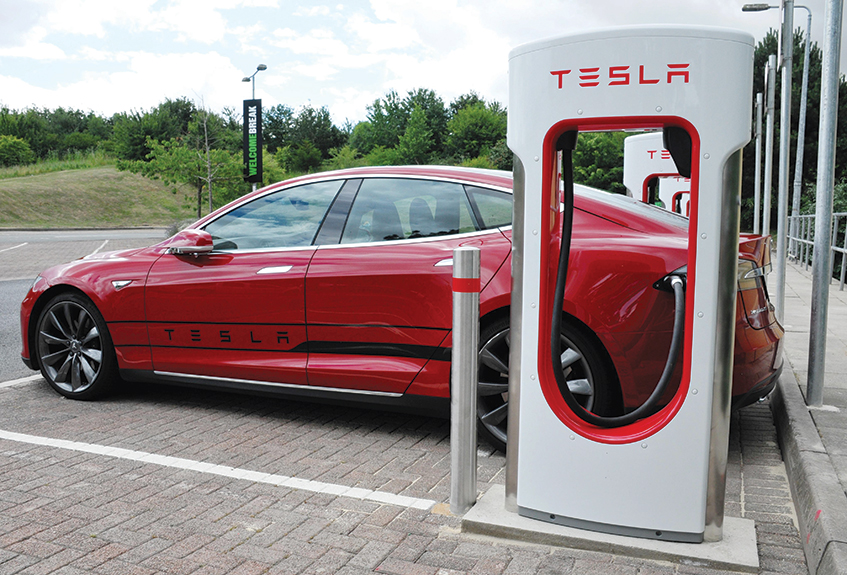
Office opportunities
In the future Tesla will look to partner with occupiers and office landlords to install charging points for workers’ vehicles.
It is also working with German tech firm Ubtricity on pilot schemes in the London boroughs of Hounslow and Kensington & Chelsea using lampposts as electric charging points.
“The government has given a very clear signal that the future of transportation in this country is zero emissions,” says Ell. “There will be a transition period during which we are going to see more and more fantastic high-quality zero-emission vehicles from ourselves and other manufactures. Ultimately that has to be a good thing for both the quality of the air that we breathe and, of course, CO2 emissions for the planet as well.”
If Tesla has its way, in just a few short years roads across the country will be filled with its cars. Silent, smooth, no fumes and no vibrations; this is a quiet revolution only in terms of the ultimate output. Because when it comes to the expansion plan itself, this auto giant is set to make more noise than most.
Tesla in numbers
2003 founded by engineers in Silicon Valley
2012 launched its first car, the Model S
17 stores in the UK
250 retail and service stations worldwide
39 UK supercharger locations
100+ UK destination chargers
To send feedback, e-mail amber.rolt@egi.co.uk or tweet @AmberRoltEG or @estatesgazette





